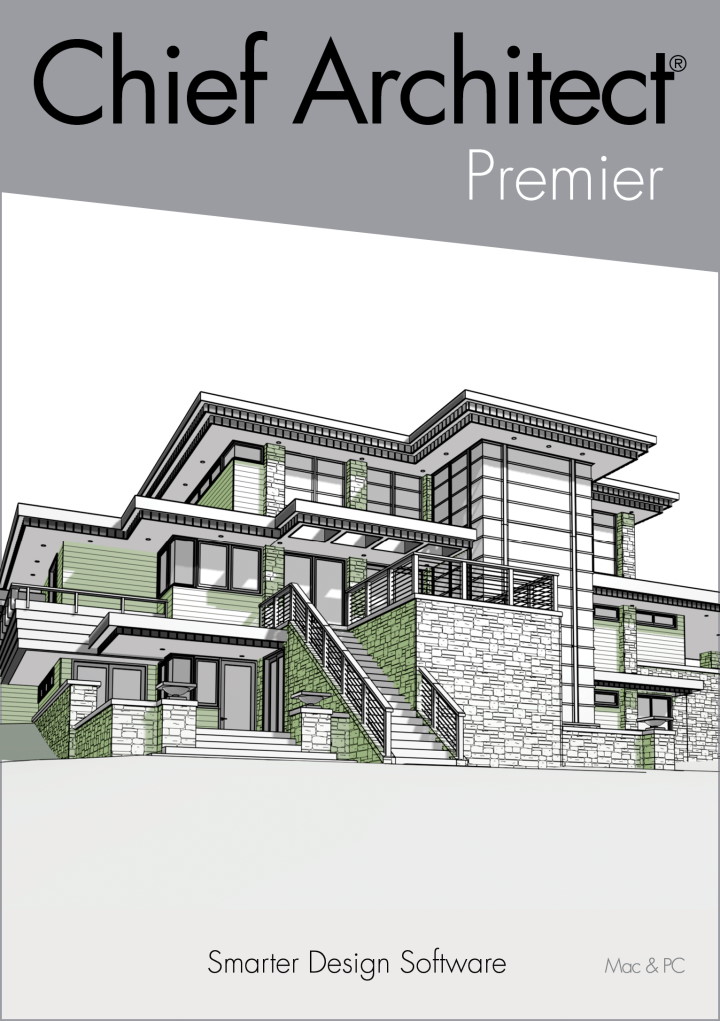Architect Interview Questions You Should Be Prepared to Answer
Architect Interview Questions You Should Be Prepared to Answer
Blog Article
Understanding the Diverse Job Paths Available for Aspiring Architect
As a hopeful Architect, you have a world of career courses waiting on you. Each course provides distinct obstacles and possibilities to use your imagination and technological knowledge. Whether you're drawn to conventional architecture or the nuances of sustainable style, there's a specific niche that aligns with your passions. Recognizing these varied alternatives can form your specialist journey, yet which direction will you choose to check out first?
Conventional Design: Creating Buildings and Structures
Traditional style concentrates on developing structures and frameworks that blend functionality with visual appeal. Your designs can mirror social heritage, showcasing local customs while meeting modern requirements.
You'll create abilities in composing, model-making, and site analysis, permitting you to imagine and communicate your ideas properly. Involving with clients, you'll need to recognize their vision and translate it into practical designs.
In addition, developing codes and sustainability methods are essential in your job, guaranteeing your structures are eco friendly and secure. As you expand in your profession, you'll locate opportunities in domestic, commercial, and even restoration tasks, each offering one-of-a-kind obstacles. Welcoming conventional design leads the way for a satisfying career that admires the past while shaping the future.
Urban Planning: Shaping Areas and Public Spaces
As a hopeful Architect, you can play a necessary role as a metropolitan coordinator, changing how neighborhoods connect and function. By employing community involvement techniques, you'll guarantee that citizens have a voice in shaping their setting. And also, incorporating lasting design concepts will aid develop areas that not just meet today's demands however also protect the future.
Function of Urban Planners
While lots of might believe of architects as the single visionaries behind buildings, urban planners play a vital function in forming the more comprehensive landscape of neighborhoods and public areas. By working together with different stakeholders, you'll assist develop parks, transportation systems, and residential areas that promote social communication and accessibility. Your proficiency in spatial design and neighborhood characteristics enables you to visualize future development while protecting social heritage.
Neighborhood Engagement Methods
Effective community interaction methods are crucial for urban organizers to assure that the voices of locals are heard and valued in the preparation procedure. To cultivate purposeful dialogue, you must prioritize open forums and workshops where area participants can reveal their concepts and problems. By actively including and listening responses, you'll produce spaces that mirror the area's requirements, ultimately leading to even more effective and sustainable metropolitan settings.
Lasting Design Concepts
When creating metropolitan spaces, incorporating sustainable style concepts is important for creating settings that thrive both ecologically and socially. You should start by concentrating on energy effectiveness, making use of materials that decrease waste and promote recycling. Take into consideration integrating green areas, like parks and yards, to improve biodiversity and improve air high quality. Promoting walkability and public transportation can reduce reliance on autos, cultivating a healthier neighborhood.
Creating with water conservation in mind is also crucial-- think of rain gardens and permeable surface areas to manage stormwater. Involving neighborhood participants during the preparation process assurances that the rooms you develop satisfy their demands and urge social communication. By accepting these concepts, you'll add to dynamic, sustainable urban landscapes that benefit every person.

Landscape Style: Producing Lasting Exterior Atmospheres
As you check out landscape architecture, you'll uncover crucial layout principles that create functional and gorgeous outdoor areas. Sustainable techniques play an important duty in ensuring these atmospheres thrive while decreasing environmental influence. And also, you'll discover a range of job chances that allow you to make a genuine distinction in just how people communicate with nature.
Style Concepts in Landscape
Recognizing layout concepts in landscape style is crucial for developing sustainable outdoor atmospheres that balance with nature. You'll need to consider elements like proportion, scale, and equilibrium to assure your layouts feel cohesive and welcoming. Incorporating indigenous plants not just improves biodiversity however likewise lowers water use, making your landscape durable. Think of the circulation of area and exactly how people engage with it; pathways and seating locations must invite expedition and leisure. In addition, take note of seasonal changes, developing with materials that enhance the surroundings year-round (Architect). By prioritizing sustainability and visual appeals, you can produce exterior spaces that enrich the neighborhood and advertise well-being. Embracing these principles will certainly set a strong structure for your career in landscape architecture.
Lasting Practices Overview
Sustainable practices in landscape architecture not only concentrate on looks but also focus on eco-friendly wellness and resource conservation. You can develop areas that promote soil health and wellness, such as using organic products and exercising permaculture concepts. Eventually, these techniques assure your layouts benefit both individuals and the environment for years to come.
Occupation Opportunities Exploration
With a solid foundation in lasting practices, landscape architecture supplies a variety of occupation courses that allow you to make a significant effect on the environment. You could function as a landscape designer, developing aesthetically pleasing and useful exterior areas, or concentrate on eco-friendly reconstruction, aiding to revitalize broken ecological communities. Urban planners typically team up with landscape designers to create environment-friendly areas in city settings, boosting city livability. If you're passionate concerning education, think about ending up being a landscape style instructor, inspiring future generations. In addition, you might collaborate with nonprofits concentrated on ecological sustainability or involve in research study to innovate brand-new techniques. Each course not only forms lovely settings however additionally fosters a much healthier planet for future generations.
Sustainable Style: Concentrating On Eco-Friendly Practices
As you explore your career in style, accepting environment-friendly practices can set you apart in an affordable area. Sustainable style focuses on developing structures that reduce ecological effect while enhancing owner health. By incorporating eco-friendly products, energy-efficient systems, and sustainable building strategies, you'll add to a greener future.
Begin by acquiring knowledge of environment-friendly certifications like LEED or BREEAM, which can boost your credentials. Consider exactly how all-natural light, air flow, and thermal effectiveness can maximize design. Team up with engineers and environmental experts to introduce remedies that minimize waste and preserve resources.
Do not fail to remember the relevance of community participation-- interesting local stakeholders can inspire styles that integrate with the setting. As clients increasingly prioritize sustainability, your expertise in environment-friendly practices will not only bring in jobs but also accomplish your passion for liable architecture. Accept this essential element of the career, and watch your profession thrive.
Historical Preservation: Securing and Bring Back Cultural Heritage
While you begin on your building journey, consider the essential function of historic preservation in maintaining our social heritage. This area focuses on the defense and restoration of significant structures, sites, and frameworks that tell the tales of our past. By involving in historical preservation, you'll assist secure the architectural tradition that shapes neighborhood identification.
As a historic conservation Architect, you'll assess historical importance and evaluate the problem of structures. You'll work closely next with preservationists and historians to guarantee genuine remediation techniques are utilized. This occupation course permits you to mix imagination with study, enabling you to develop solutions that appreciate original products and craftsmanship.
Your work not only adds to sustainability by recycling existing buildings yet likewise promotes a feeling of pride within areas. Embracing this course will certainly assist you become a guardian of history, protecting the stories and looks that improve our lives.
Inside Architecture: Enhancing Indoor Spaces
Historic preservation and interior design both share a commitment to improving the built setting, however they focus on different facets. While historic conservation stresses maintaining a structure's historic and cultural value, indoor style zeroes in on optimizing indoor spaces for performance and appearances.
As an aspiring Architect, you'll discover that interior design permits you to mix imagination with technical abilities. You'll develop spaces that not only look great however likewise promote comfort and performance. This area involves recognizing how light, color, and materials interact within a space, impacting mood and usability.
You'll deal with various jobs, from property homes to commercial offices, making certain that each atmosphere meets the demands of its occupants. By prioritizing user experience, you can change insides into inspiring and functional rooms, making a significant effect on exactly how people communicate with their environments. Embrace the opportunity to boost interior atmospheres and shape the means individuals live and function.
Industrial Style: Merging Functionality With Aesthetics
Commercial design plays an important function in developing products that perfectly blend appearances with performance, making certain that what you use day-to-day is not just visually enticing however also sensible. As an aspiring Architect, you could engage on your own in this field, focusing on making whatever from furniture to consumer electronics. Your job involves like it recognizing individual needs, products, and manufacturing processes, permitting you to produce cutting-edge remedies that enhance daily experiences.
In industrial layout, you'll frequently work together with manufacturers, designers, and marketers, ensuring that your layouts are not just lovely but additionally feasible. This occupation course offers a dynamic atmosphere where creativity fulfills usefulness, making it a fulfilling selection for designers interested in forming the items of tomorrow.
Often Asked Inquiries
What Educational Qualifications Do I Required to End Up Being a Designer?
To end up being a designer, you'll need an expert degree in style, normally a Bachelor's or Master's. In addition, you'll need to finish a teaching fellowship and pass the Architect Registration Evaluation to practice legitimately.
Are There Accreditation Demands for Various Architectural Job Paths?
Yes, there're certification needs for numerous building paths. Architect. You'll require to pass exams, total teaching fellowships, and occasionally seek specialized training, depending upon your picked emphasis, like landscape architecture, city style, or historic conservation
What Software Application Abilities Are Essential for Engineers Today?

Exactly How Can I Gain Practical Experience While Researching Design?
You can get functional experience by interning at architectural companies, taking part in layout competitions, offering for community tasks, or collaborating with classmates on real-world jobs. These chances enhance your skills and construct important links in the sector.
What Job Opportunities Exist Outside Typical Design Firms?
You can check out various job opportunities outside typical architecture firms, like metropolitan preparation, interior decoration, landscape design, building and construction you could try these out monitoring, realty advancement, or perhaps functions in sustainability consulting. Each deals one-of-a-kind challenges and benefits.
Whether you're drawn to conventional design or the nuances of lasting layout, there's a niche that lines up with your interests.When designing urban spaces, integrating lasting layout concepts is crucial for creating settings that prosper both ecologically and socially.As you discover landscape architecture, you'll discover essential design principles that develop attractive and practical outdoor rooms.Recognizing design concepts in landscape architecture is important for producing sustainable exterior atmospheres that integrate with nature.In commercial style, you'll typically collaborate with manufacturers, engineers, and marketing experts, ensuring that your designs are not just stunning however additionally viable.
Report this page